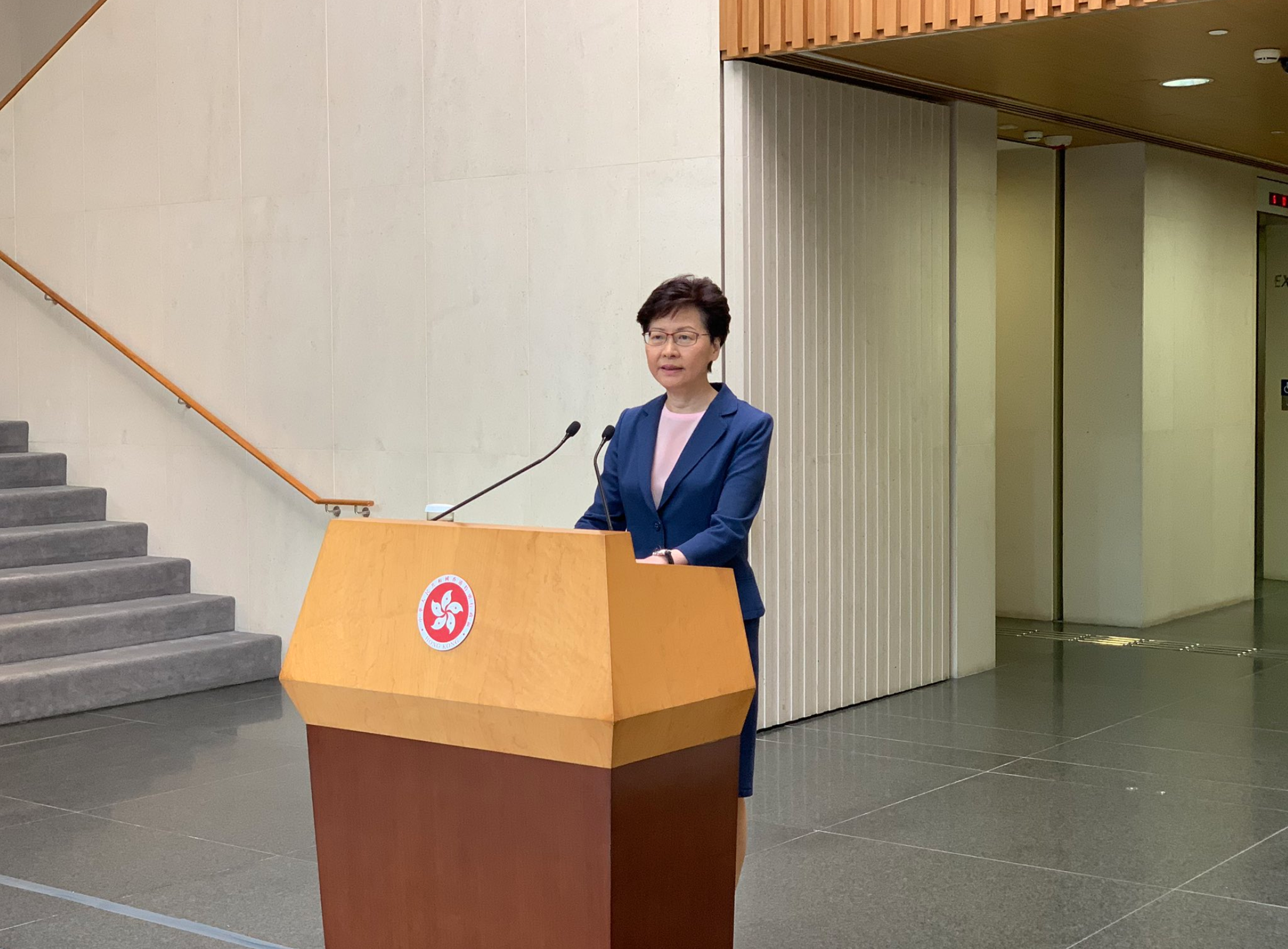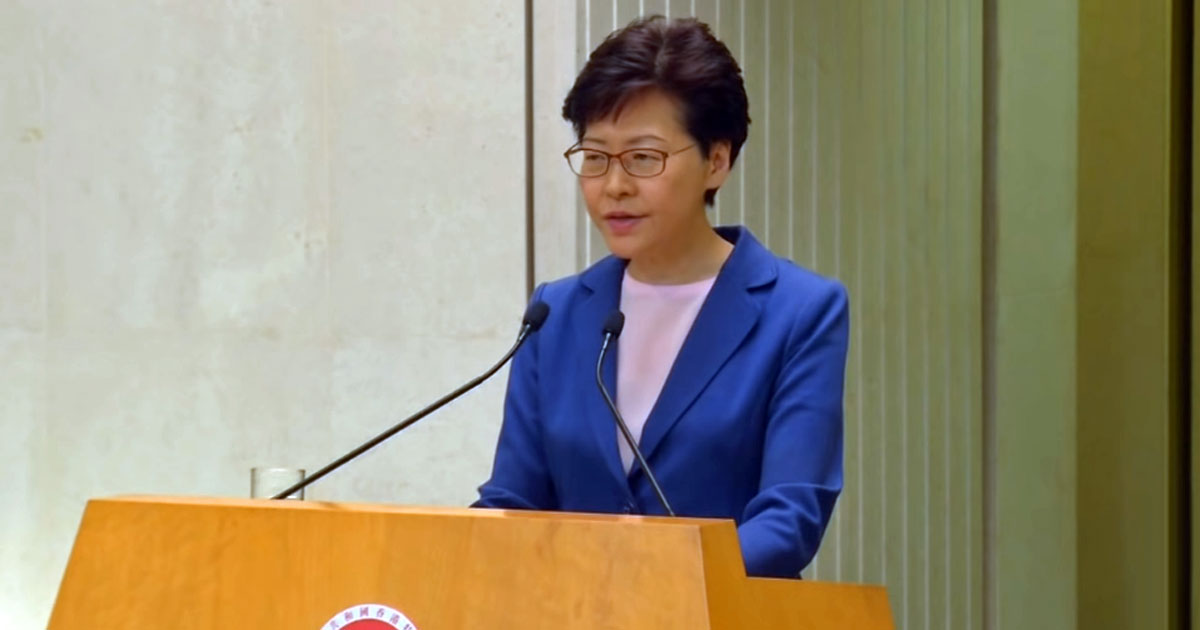Millions of Hong Kong protesters took to the streets in June 2019 demanding the government get rid of the extradition bill for good and for Chief Executive Carrie Lam to step down.
It has now emerged that Lam did indeed repeatedly try to resign in light of the political situation in Hong Kong, but the Chinese government wouldn't allow her to do so.
Clean up mess she created
According to Financial Times, people with direct knowledge of the matter claimed the Chinese government refused to let Lam resign, but instead insisted she needed to "stay to clean up the mess she created".
 Image via timmysung/Twitter
Image via timmysung/Twitter
The scale of discontent, when put into perspective, was and still is daunting.
The series of demonstrations have led to the deepest political crisis since the handover from British to Chinese sovereignty that only Lam herself can deal with the situation, FT reported.
And nobody wants the top job in Hong Kong either, according to the same source.
In response to FT queries, the Chief Executive office replied that the Chief Executive "remains committed to serving the people of Hong Kong".
The Hong Kong and Macao Affairs Office, which is the Chinese government's agency responsible for supervising the region, did not respond to FT's request for comment.
More protests in the New Territories
Despite Lam announcing that the bill is "dead", more protests took place over the weekend.
Protests had spread to the New Territories, which previously were held in Admiralty, the heart of the city with government headquarters and Legislative Council building.
Protesters rallied against the influx of parallel traders from mainland China on July 13 in Sheung Shui, a town near the Chinese border and close to Shenzhen.
Thousands of Hong Kong people marched on Saturday to protest against mainland Chinese traders in the town of Sheung Shui near the border. The demonstration started peacefully but devolved into scuffles and shouting. More here: https://t.co/DEGYA7rBEZ by @GregTorode @Vimvam_Tung pic.twitter.com/1HOhwEubOY
— Reuters (@Reuters) July 13, 2019
Other protests
In a statement made ahead of the demonstration, the organisers said the anti-extradition bill issue and the reclaim Sheung Shui action are "not binary oppositions", reported Hong Kong Free Press, because both stemmed from the government's failure in governance and an unrepresentative legislature.
On July 14, around 110,000 people attended another anti-extradition march in Sha Tin, a suburban residential area in the New Territories, according to the South China Morning Post.
Today’s protest in Shatin is sizable. This is the heartland of HK suburbia. Here are the crowds just near Che Kung Temple Station; still a constant stream coming from Tai Wai Station. pic.twitter.com/tlxX3ywMhm
— Antony Dapiran (@antd) July 14, 2019
Meanwhile, outside the New Town Plaza mall (at steps below Shatin's town hall & public library), there is a gathering where participants are sharing their protest experiences + talking about their social/ political frustrations in place of a film screening. #HongKong (8:30 p.m.) pic.twitter.com/lSjNCOPXXV
— Natasha Khan (@natashakhanhk) July 14, 2019
Both protests escalated into clashes between protesters and the police, with reports of the police using batons and pepper spray against protesters.
According to The Strait Times, police officers armed with shields and batons marched into New Town Plaza mall in Sha Tin on Sunday night to disperse protesters, after the lawful demonstration in the afternoon.
The clashes turned violent as the police were seen chasing after protesters who were trying to flee from the scene.
At least 40 people have been arrested for unlawful assembly and assaulting the police.
Journalists protested against the police too
More than 1,500 journalists in Hong Kong marched to the police headquarters on July 14 against the infringement of press freedom during anti-extradition protests, according to SCMP, as the police were seen attacking journalists, as well as obstructing them from carrying out their tasks.
#HongKong reporters getting ready to march to #HongKongPolice headquarters & Chief Executive Office in protest of excessive force they took against journalists during #AntiELAB clearance actions pic.twitter.com/iKcKmxlQv7
— Frances Sit (@frances_sit) July 14, 2019
Chairman of the Hong Kong Journalists Association pointed out the irony in finding the police officers threatening when they are supposed to be the law enforcers, and that journalists struggled to keep themselves safe despite identifying themselves as the press.
A police spokesperson admitted that there was room for improvement in the coordination between the police and media, and that more training would be provided to the police officers in light of the protests over the past month.
Top photo via
If you like what you read, follow us on Facebook, Instagram, Twitter and Telegram to get the latest updates.
